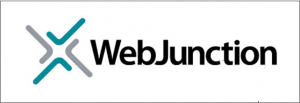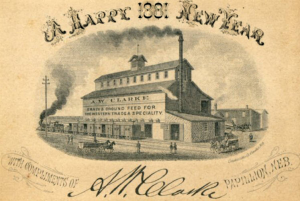Search the Blog
Categories
- Books & Reading
- Broadband Buzz
- Census
- Education & Training
- General
- Grants
- Information Resources
- Library Management
- Nebraska Center for the Book
- Nebraska Memories
- Now hiring @ your library
- Preservation
- Pretty Sweet Tech
- Programming
- Public Library Boards of Trustees
- Public Relations
- Talking Book & Braille Service (TBBS)
- Technology
- Uncategorized
- What's Up Doc / Govdocs
- Youth Services
Archives
Subscribe
Category Archives: Information Resources
The Data Dude – Technology Tidbit
 The Dude has been busy reviewing all your public library surveys and trying his best to answer your questions about what to report where (sometimes it’s a judgment call), but took a bit of time to throw together this little technology tidbit. Keep the surveys coming, as the response rate is roughly 50% at the moment, and the deadline is Friday the 13th of February. One more item of note before heading to the stats, and that is, please let me know about any suggestions for next year’s survey (and keep in mind that getting rid of it altogether is not an option). Some of you have already sent suggestions, and I have ideas of my own, but I’d certainly like to hear your thoughts.
The Dude has been busy reviewing all your public library surveys and trying his best to answer your questions about what to report where (sometimes it’s a judgment call), but took a bit of time to throw together this little technology tidbit. Keep the surveys coming, as the response rate is roughly 50% at the moment, and the deadline is Friday the 13th of February. One more item of note before heading to the stats, and that is, please let me know about any suggestions for next year’s survey (and keep in mind that getting rid of it altogether is not an option). Some of you have already sent suggestions, and I have ideas of my own, but I’d certainly like to hear your thoughts.
According to the U.S. Census Bureau, More than 21% of Nebraskans do not have access to high speed internet (a paid internet service other than dial-up) at home. This is close to the national average (about 22%), and thus underlies the importance of public offerings for technology services (such as libraries). The leader is New Hampshire, with almost 86% of its residents living in a household with high speed internet, and just over 93% in a household with a computer. These numbers do not address the FCC’s recent redefinition of what constitutes “broadband” (and by implication “high speed”), as the FCC now labels broadband as anything more than 25 Mbps.
According to the 2013 public library survey (last year’s survey), Nebraska libraries provide:
- Free public internet access (99% of libraries with 2.2 Million annual uses)
- Free WiFi (94% of libraries)
Even if, or rather, when, improvements are made to services and pricing so that high speed or broadband becomes more prevalent in more households (and hopefully the FCC’s redefinition expedites that), there will still be the need to address the digital literacy of the users. Just because I got the new dual motor, AWD, 691 hp, 3.2 seconds to 60 mph, all electric, zero emissions Tesla Model S P85D doesn’t mean I know how to drive it well. The Dude would have the patience to try and learn, however, if given the opportunity. OK, perhaps comparing the Tesla Model S P85D to 25 Mbps broadband isn’t an apt analogy, but the point is that even with increased speed and access, there will be a need for assistance navigating the waters, and that’s where libraries and librarians have the opportunity to excel. To further illustrate, last year’s Digital Inclusion Survey noted that Nebraska libraries also provided:
- Online employment resources (98% of libraries)
- Computer training (97% of libraries)
- Assistance with completing government forms online (98% of libraries)
Shaka.
The Data Dude – Public Library Survey
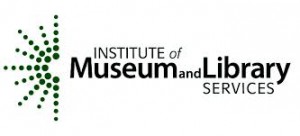 Shaka. It is getting close to crunch time for the annual IMLS Public Library Survey. The deadline is February 13, 2015, a mere 9 days away. The Bibliostat Collect portion of the data services section of the NLC website has a link to the login, instructions, tips, and other tidbits to help you complete the survey. Keep in mind that the survey is required for your library to receive state aid if you are accredited. If you aren’t accredited, you still have an incentive to complete the survey ($200), called Dollar$ for Data.
Shaka. It is getting close to crunch time for the annual IMLS Public Library Survey. The deadline is February 13, 2015, a mere 9 days away. The Bibliostat Collect portion of the data services section of the NLC website has a link to the login, instructions, tips, and other tidbits to help you complete the survey. Keep in mind that the survey is required for your library to receive state aid if you are accredited. If you aren’t accredited, you still have an incentive to complete the survey ($200), called Dollar$ for Data.
As of this morning, around 33% of Nebraska public libraries have completed the survey. I know some of you are waiting for figures from governmental entities or perhaps are just procrastinators. Please don’t wait until the last minute, just in case you might have problems or if issues arise.
I am here to help you with the process in any way I can. Don’t hesitate to contact me. Thank you in advance for your participation and patience.
New Government Publications Received at the Library Commission
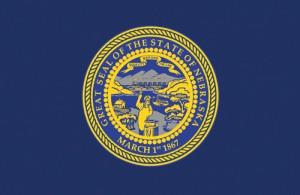 New state government publications ranging from Administrative Services to University of Nebraska Press, received in January 2015.
New state government publications ranging from Administrative Services to University of Nebraska Press, received in January 2015.
http://nlc.nebraska.gov/publications/archives/WhatsUpDoc/WUDJan2015.pdf
ProQuest K12 Databases Trial
ProQuest is offering two months of trial access to their most popular K12 databases:
- CultureGrams
- eLibrary
- eLibrary Science
- Government Reporter
- History Study Center
- Learning: Literature
- ProQuest Research Companion
- SIRS Decades
- SIRS Discoverer
- SIRS Issues Researcher
- SIRS Renaissance
- SIRS WebSelect
Trial Dates: January 27, 2015 through March 27, 2015
Trial access instructions were distributed via a January 28, 2015 message to the TRIAL mailing list. If you did not receive this information and would like to have it sent to you, please email Susan Knisely.
Want to receive email notification of future database trials and discounted pricing? Make sure you are signed up for the Nebraska Library Commission’s TRIAL mailing list. you can learn more about mailing lists maintained by the Nebraska Library Commission, including how to subscribe, on our Nebraska Library Commission Mailing Lists page.
Posted in Information Resources, Technology
Leave a comment
The Data Dude on WiFi
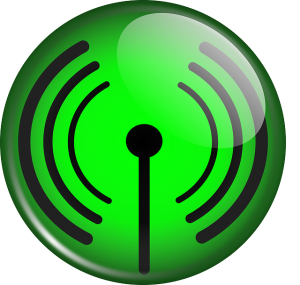 This week, in between answering public library survey related questions and reviewing actual surveys that have been submitted (the deadline is February 13, 2015), the Dude has been thinking about this new element on the survey asking for the number of annual wireless internet sessions. Some of the responses the Dude has been getting about collecting this data have been a thumbs down analogous to Joaquin Phoenix’s portrayal of Commodus in the movie Gladiator or the verbal equivalent: “I ain’t collectin’ this”. In all fairness, most are at least willing to provide a broad observation estimate of the use, which is probably a fairly decent number. Thank you for doing that. This makes me think about the question you might be asking, which is why is collecting this data valuable? Let’s start this odyssey by looking the importance of public WiFi.
This week, in between answering public library survey related questions and reviewing actual surveys that have been submitted (the deadline is February 13, 2015), the Dude has been thinking about this new element on the survey asking for the number of annual wireless internet sessions. Some of the responses the Dude has been getting about collecting this data have been a thumbs down analogous to Joaquin Phoenix’s portrayal of Commodus in the movie Gladiator or the verbal equivalent: “I ain’t collectin’ this”. In all fairness, most are at least willing to provide a broad observation estimate of the use, which is probably a fairly decent number. Thank you for doing that. This makes me think about the question you might be asking, which is why is collecting this data valuable? Let’s start this odyssey by looking the importance of public WiFi.
Quite simply, public WiFi is valuable because if you don’t have a data enabled device, you can’t get online if you aren’t somewhere that has WiFi availability. And we all want to be online, or at least have the option. If you do have a data enabled device (such as a tablet or smart phone), most likely you don’t want to use up your data or pay extra unless it is absolutely necessary (like if you get lost and need to look up a map or directions; if you need to find an address or phone number in a pinch; if you want to order a pizza online while you are out at the lake and pick it up on the way home; or if you are at Home Depot and want to know if the price they are asking for that garden weasel is comparable to Lowe’s). Those kinds of things. Iconic Displays recently produced an infographic entitled “Is Wifi the New Cigarette?” detailing the importance of WiFi to the average person:
- 30% of people claim they can’t go without WiFi access for more than an hour
- 60% of people can’t go without WiFi access for more than a day
- 39% say they would give up coffee for WiFi access
- 43% say they would go without chocolate for WiFi
- 75% said that a week without WiFi would leave them grumpier than a week without coffee
So we like our WiFi (for some, more than our coffee and chocolate), and we’ve come to expect it in many places in addition to our homes. These include hotel rooms, restaurants (including coffee shops), airports (and even some airplanes), public parks, public libraries, and many others. As usual, the Dude feels a need to toss in some data about how our WiFi compares to the rest of the world. Predictably, it ain’t good. According to Rotten WiFi, the U.S. ranks a measly 20th in the world with an average public WiFi download speed of 6.89. The U.S. was behind number 1 Lithuania (15.4 Mbps), Croatia (14.05), Estonia (13.75), and 16 others. The Dude could find no credible data on average WiFi speeds for libraries (either in Nebraska or the U.S.). Perhaps that would be the subject of a new data element on the survey…
Focus. Back on track with the value of collecting this data. As illustrated above, it’s important to have places in the community that have free WiFi that we can use. If we are traveling and just passing through or stay somewhere that doesn’t have WiFi, it’s nice to have the option to go to our public library and use our own WiFi enabled devices because if we have our own device, we don’t need to wait for a public access terminal. We can also sit on the library’s sofa, or near the library’s fireplace (if they have one), or outside (if the weather is nice) instead of on those public access chairs. Also, many rural communities do not have many areas where free public WiFi is available (other than the library), and many do not have access in their homes. So, the gathering of this data is, like other data gathering, important in that it demonstrates that libraries are providing a service to their community that is valuable.
One final note and that is that some libraries are also getting into the business of loaning WiFi devices to library card holders so they can use them in their own homes. An example is the New York Public Library, which recently scored $1 million from Google and $500,000 from the Knight Foundation. The devices (4G LTE mobile hot spots) are in high demand, and may be checked out for a longer duration (like, months). This is another example of libraries reaching out to meet the technology needs of the community. In NY, over 2 million people don’t have access to broadband or WiFi at home, so these kinds of services not only introduce those library users to WiFi, but provide valuable connectivity for those who simply can’t afford it. Shaka.
New Government Publications Received at the Library Commission
 New state government publications ranging from Agriculture to University of Nebraska Press, received November and December, 2014.
New state government publications ranging from Agriculture to University of Nebraska Press, received November and December, 2014.
http://nlc.nebraska.gov/publications/archives/WhatsUpDoc/WUDNovDec2014.pdf
The Data Dude – eBooks and Audiobooks
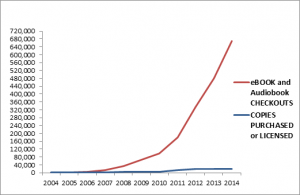 For this week, the Dude takes another quick look at eBooks and Audiobooks. He’s been working on some handouts and fact sheets for the Nebraska eReads program, and here is one of the resultant charts. As many of you know, eBook and Audiobook circulations are notably increasing, as evidenced by the chart to the right. Circulation has increased about 39% from last year. Keep in mind, however, that there are more participating OverDrive libraries as well (more borrowers in the ocean of electronic content that adds to the rise in circulation). A few other facts about eBooks and Audiobooks in Nebraska:
For this week, the Dude takes another quick look at eBooks and Audiobooks. He’s been working on some handouts and fact sheets for the Nebraska eReads program, and here is one of the resultant charts. As many of you know, eBook and Audiobook circulations are notably increasing, as evidenced by the chart to the right. Circulation has increased about 39% from last year. Keep in mind, however, that there are more participating OverDrive libraries as well (more borrowers in the ocean of electronic content that adds to the rise in circulation). A few other facts about eBooks and Audiobooks in Nebraska:
- There are now over 8 million eBooks available (over 88% increase from 2012)
- There are now over 794,000 AudioBooks available (over 96% increase from 2012)
- The return on investment for every dollar invested is $2.72
- Virtual visitors had to wait 204,502 times for desired titles in 2014
- There are now 167 Participating Libraries offering eBooks and Audiobooks via the OverDrive consortium
If the budget request for FY 2016 and FY 2017 is approved, the following additional items could be purchased/licensed:
For FY 2016:
- 8,300 eBooks could be purchased/licensed
- 2,800 Audiobooks could be purchased/licensed
For FY 2017:
- 9,000 eBooks could be purchased/licensed
- 3,100 Audiobooks could be purchased/licensed
Shaka.
A Balloon School in Nebraska?
 While I was in Rochester, New York this past Christmas visiting my husband’s family, my father-in-law showed me some letters from a World War I 2nd Lieutenant from Spencerport, NY, who had a Nebraska connection. Based on the letters and some further research, I found out that this young man was stationed at Fort Omaha, Nebraska for Balloon School.
While I was in Rochester, New York this past Christmas visiting my husband’s family, my father-in-law showed me some letters from a World War I 2nd Lieutenant from Spencerport, NY, who had a Nebraska connection. Based on the letters and some further research, I found out that this young man was stationed at Fort Omaha, Nebraska for Balloon School.
Fort Omaha (the Nebraska Memories picture to the left), located at 5730 North 30th Street, in Omaha, Nebraska, was opened in 1868 as an Indian War-era United States Army supply depot for various forts along the Platte River. This is also where Ponca Chief Standing Bear and 29 fellow Ponca were held prior to the landmark 1879 trial of Standing Bear v. Crook. Judge Elmer Dundy determined that American Indians were persons within the meaning of the law and that the Ponca were illegally detained after leaving Indian Territory in January 1879. 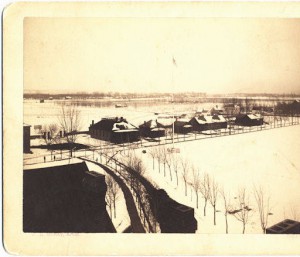 The Nebraska Memories picture of the fort to the right, was taken about that same time period.
The Nebraska Memories picture of the fort to the right, was taken about that same time period.
Fort Omaha today is primarily occupied by Metropolitan Community College, but continues to house Navy, Marine and Army Reserve units. The fort is located in the present-day Miller Park neighborhood of North Omaha. The Fort Omaha Historic District is listed on the National Register of Historic Places. The district includes the 1879 General Crook House Museum, as well as the 1879 Quartermaster’s office, 1878 commissary, 1884 guardhouse, 1883 ordnance magazine and 1887 mule stables.
In 1907 the Army built a large steel hangar at Fort Omaha for use in experiments with dirigibles, a program that was abandoned in 1909. This program and its successor, the military use of hot air balloons for reconnaissance missions, were part of the American Expeditionary Forces. A balloon house was built in 1908, and in 1909 the first balloon flight took place. Here is a picture from Nebraska Memories of the Balloon House at Fort Omaha, taken sometime between 1908 and 1910:
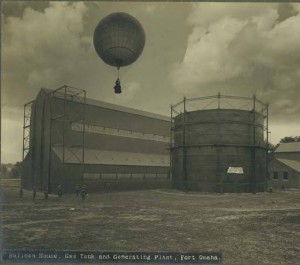 Shortly after the United States entered World War I, 800 men enlisted in the Aviation Section, U.S. Signal Corp, one of whom was William Spencer Barker, from Spencerport, NY. They were immediately sent to the Balloon School at Fort Omaha for training. More than 16,000 airmen went through the Balloon Schools at Fort Omaha and other locations around the U.S., between 1908 and the close of the program in 1919.
Shortly after the United States entered World War I, 800 men enlisted in the Aviation Section, U.S. Signal Corp, one of whom was William Spencer Barker, from Spencerport, NY. They were immediately sent to the Balloon School at Fort Omaha for training. More than 16,000 airmen went through the Balloon Schools at Fort Omaha and other locations around the U.S., between 1908 and the close of the program in 1919.
Balloonists were trained in map reading and charting troop movements. This information was communicated through an extensive switchboard system to artillery troops on the ground. The balloons were “captive” stationary balloons, utilized tail fins for stabilization, and had cables to tether the balloon to the ground.
In 1917, 2nd Lieutenant Baker was part of the 5th Squadron, Balloon Division, and did see military action with balloon squadrons in France from 1918-1919.
Visit Nebraska Memories to search for or browse through many more historical images of digitized from photographs, negatives, postcards, maps, lantern slides, books and other materials.
Nebraska Memories is a cooperative project to digitize Nebraska-related historical and cultural heritage materials and make them available to researchers of all ages via the Internet. Nebraska Memories is brought to you by the Nebraska Library Commission. If your institution is interested in participating in Nebraska Memories, see http://nlc.nebraska.gov/nebraskamemories/participation.aspx for more information, or contact Beth Goble, Historical Services Librarian, or Devra Dragos, Technology & Access Services Director.
2015 Nebraska Travel Guide
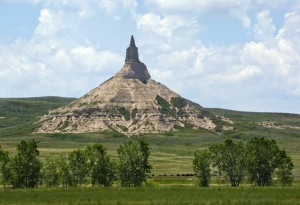 The new 2015 Nebraska Travel Guide is now available free from the Nebraska Travel Commission.
The new 2015 Nebraska Travel Guide is now available free from the Nebraska Travel Commission.
Copies are available individually and in quantities.
To request copies of the 2015 Nebraska Travel Guide please contact Kaitlyn Watermeier at ntc.tourism2@nebraska.gov or call Kaitlyn at 402-471-3744.
The Data Dude – New Systems Map
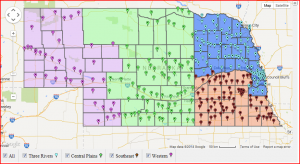 Shaka. This week I will show you an interactive map of the new library systems. This map illustrates the new systems and has markers for each library. You can filter the markers (see the legend at the bottom) by system. If you click on an individual marker, you will get a pop-up box that tells you the name of the library, its system, service population, and a link to more information about it from the NLC website. If you click on any of the dead space within the map, you will get a pop-up indicating what Nebraska County you clicked on and a link to the website for the corresponding system. There is also a small arrow in the upper-right hand corner. If you click on that, it expands a list of the libraries by library name. Please let me know if you have any questions or notice any errors.
Shaka. This week I will show you an interactive map of the new library systems. This map illustrates the new systems and has markers for each library. You can filter the markers (see the legend at the bottom) by system. If you click on an individual marker, you will get a pop-up box that tells you the name of the library, its system, service population, and a link to more information about it from the NLC website. If you click on any of the dead space within the map, you will get a pop-up indicating what Nebraska County you clicked on and a link to the website for the corresponding system. There is also a small arrow in the upper-right hand corner. If you click on that, it expands a list of the libraries by library name. Please let me know if you have any questions or notice any errors.
January webinar: Pathways to Guide Health Education at Your Library
Registration is now open for our January webinar: Pathways to Guide Health Education at Your Library:
Monday, January 26th
2:00 PM Eastern/11:00 AM Pacific
Access to reliable consumer health information is an essential component of individual and community well-being. Because of their unique role and reputation for being open and available to all, public libraries bring valuable assets to supporting local community health efforts. In this WebJunction webinar, participants will explore essential pathways for libraries to address meaningful health information and services. Participants will be introduced to foundational considerations for ensuring ethics and privacy in patron interactions, maintaining health collections at the public library, addressing community health literacy, and supporting healthy communities through partnerships. Participants will also be introduced to resources to advance these topics in their community, and leave the session prepared to join the strong network of public libraries advancing health education nationwide.
Learn more and register here: http://webjunction.org/events/webjunction/pathways-guide-health-education.html
Thanks for your help!
 You may remember earlier this year we asked for help in transcribing two autograph albums in Nebraska Memories that belonged to May Martin Ellis and her husband John Ellis. The project was a great success and it only took one week for both albums to be transcribed. We want to thank everyone who helped make this project a success.
You may remember earlier this year we asked for help in transcribing two autograph albums in Nebraska Memories that belonged to May Martin Ellis and her husband John Ellis. The project was a great success and it only took one week for both albums to be transcribed. We want to thank everyone who helped make this project a success.
For those of you not familiar with the project these albums contain many pages of handwritten inscriptions. Some are easy to read while  others take a bit more effort to decipher. Transcribing the handwriting makes it easier to read the inscriptions and makes the albums searchable. As you read the transcriptions remember we did our best to type the text as it was written and did not fix any of errors. This means you will find phrases such as “always paddle your one cenue” and “In the depth of thine- Effeetiend[?] , please plant a sweat Fore-get me not.” The question mark in the brackets means that we were unable to clearly read the handwriting and typed our best guess. If you are have having a hard time deciphering those phrases my guess is that they meant to say “always paddle your own canoe” and “In the depth of thine affection plant a sweet forget me not”.
others take a bit more effort to decipher. Transcribing the handwriting makes it easier to read the inscriptions and makes the albums searchable. As you read the transcriptions remember we did our best to type the text as it was written and did not fix any of errors. This means you will find phrases such as “always paddle your one cenue” and “In the depth of thine- Effeetiend[?] , please plant a sweat Fore-get me not.” The question mark in the brackets means that we were unable to clearly read the handwriting and typed our best guess. If you are have having a hard time deciphering those phrases my guess is that they meant to say “always paddle your own canoe” and “In the depth of thine affection plant a sweet forget me not”.
The transcriptions available in Nebraska Memories can be viewed in three different places in the interface. While I’m focusing on these two albums the viewing options apply to all items in the collection that include transcriptions. Let me show you how you can search and view the transcribed text.
While working with these albums I remember reading at least one reference to dishes that I found amusing but unfortunately I don’t know which album it was in. A search for the word dishes shows that the word appears in both albums. I am going to look at May’s album. When I click on the link to her album from the search results page I’m taken directly to page 42 in the album where Eva has written a note to May about washing dishes.
 As I mentioned there are three places where the transcription can be viewed. The first place is towards the bottom of the page in the area labeled Description. The second place is on the Text tab. This tab is located just above the album page between the Image tab and the search box.
As I mentioned there are three places where the transcription can be viewed. The first place is towards the bottom of the page in the area labeled Description. The second place is on the Text tab. This tab is located just above the album page between the Image tab and the search box. 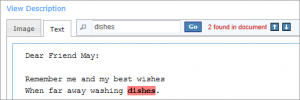 These two tabs can be used to switch between the Image view and Text (transcript) view of the page. After clicking on the Text tab you will see the word dishes highlighted. Also note when you are on the Text tab that up and down arrows now appear next to the phrase “2 found in document”. Use these arrows to move to the previous and next instances of your search term.
These two tabs can be used to switch between the Image view and Text (transcript) view of the page. After clicking on the Text tab you will see the word dishes highlighted. Also note when you are on the Text tab that up and down arrows now appear next to the phrase “2 found in document”. Use these arrows to move to the previous and next instances of your search term.
 The last way to view the transcription is by clicking on the View Image & Text link. This view allows you to see the transcribed text and the image at the same time. To adjust the widths of the text and image area click on the slider button and drag it left or right. Use the thumbnails at the bottom of the page to move from page to page.
The last way to view the transcription is by clicking on the View Image & Text link. This view allows you to see the transcribed text and the image at the same time. To adjust the widths of the text and image area click on the slider button and drag it left or right. Use the thumbnails at the bottom of the page to move from page to page.
As the New Year begins I hope you take a few minutes to explore these albums and all of the digitized photographs, negatives, postcards, maps, lantern slides, books and other materials available through Nebraska Memories.
Nebraska Memories is a cooperative project to digitize Nebraska-related historical and cultural heritage materials and make them available to researchers of all ages via the Internet. Nebraska Memories is brought to you by the Nebraska Library Commission. If your institution is interested in participating in Nebraska Memories, see http://nlc.nebraska.gov/nebraskamemories/participation.aspx for more information, or contact Beth Goble, Historical Projects Librarian, or Devra Dragos, Technology & Access Services Director.
The Data Dude – New Data Elements
 The Data Dude recently attended the SDC (State Data Coordinator) conference in Louisville, KY. The Dude votes thumbs up on the conference sessions, the city of Louisville (its all about horses and bourbon), and the invaluable time spent with colleagues from other states. The Dude votes thumbs down on flight delays and the anxiety producing craziness of the typical airport. The purpose in writing today is to explore what data elements are important to you, the actual people that capture and record these statistics on the annual public library survey (affectionately known to many as the “Bibliostat One” and unaffectionately known as many other things). Are there statistics you are collecting that you think might be important on a state or national level? Please let me know, or even let me know some general ideas or thoughts you might be having, so they might be explored further or built upon. A few things were discussed at the SDC conference that are worth noting and might jog your ability to collaborate creatively. Number one: Virtual library visits. As physical visits may be declining, it probably is important to track virtual visitors to the library (e.g. visitors to the library website). Some states already collect this data. Does your library track this information? If so, does it underline the importance of your website, and perhaps more importantly, keeping it updated?
The Data Dude recently attended the SDC (State Data Coordinator) conference in Louisville, KY. The Dude votes thumbs up on the conference sessions, the city of Louisville (its all about horses and bourbon), and the invaluable time spent with colleagues from other states. The Dude votes thumbs down on flight delays and the anxiety producing craziness of the typical airport. The purpose in writing today is to explore what data elements are important to you, the actual people that capture and record these statistics on the annual public library survey (affectionately known to many as the “Bibliostat One” and unaffectionately known as many other things). Are there statistics you are collecting that you think might be important on a state or national level? Please let me know, or even let me know some general ideas or thoughts you might be having, so they might be explored further or built upon. A few things were discussed at the SDC conference that are worth noting and might jog your ability to collaborate creatively. Number one: Virtual library visits. As physical visits may be declining, it probably is important to track virtual visitors to the library (e.g. visitors to the library website). Some states already collect this data. Does your library track this information? If so, does it underline the importance of your website, and perhaps more importantly, keeping it updated?
Secondly, how many of you use non-pc devices? The thing that immediately comes to mind would be the 3D printer; however, what about other non-pc devices such as tablet computers? I know many libraries make these available in lieu of the traditional PC. For those of you with tethered (or non-tethered) tablets, are you counting and reporting those now, or would this fit more appropriately under a separate data element called “non-pc devices”? With the recently concluded digital inclusion survey (Nebraska scored a stellar 64% response rate), how about broadband speed? I know of a few libraries that completed the speed test, looked at the low numbers and said, “wait a minute…”. They used this as a catalyst to talk to their ISP and found out they were getting the shaft (maybe intentionally, maybe not) when it came to what they were paying for. The point is that the DI Survey uncovered these gross injustices, and the librarians took action to remedy them. The question that remains is: Would actual speed reporting be beneficial, or are there simply too many variables in place to capture it accurately?
Furthermore, new library services that may be worth noting in data collection include self-directed education and local digital collections. Is there anything else on your list? I’ve already starting thinking about next year’s survey and perhaps some tools to help you with using the compiled data. Capturing uses of electronic resources continues to be problematic. There are numerous download services that libraries might subscribe to. If the library pays for it, and the virtual library visitor uses it, shouldn’t we somehow try to paint a picture of its use? Many of these things are currently lumped into the “database” bin and counted as boring ol’ “1”, simply because there is no other definition that they fit into. I wonder if instead of trying to write a definitino that captures all of these services, perhaps we should simply add a three part question to provide a more accurate portrayal: (1) Does your library subscribe to an electronic downloadable or streaming service; (2) if so, what is the name of the service; and (3) how many times does it get used in a year. The survey could provide a prompt to enter this information for each subscribed service and a separate element could do the calculations for the total uses of all downloadable services. Shaka.
IMLS and Dept. of Ed. hosts free digital strategy webinar
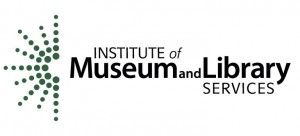 Tomorrow, the Institute of Museum and Library Services (IMLS) and the Office of Career, Technical, and Adult Education (OCTAE) at the U.S. Department of Education will host “Reboot your Digital Strategy,” a webinar that will explore national initiatives, resources, and tools that public and school librarians can use to enhance their digital literacy programming and services.
Tomorrow, the Institute of Museum and Library Services (IMLS) and the Office of Career, Technical, and Adult Education (OCTAE) at the U.S. Department of Education will host “Reboot your Digital Strategy,” a webinar that will explore national initiatives, resources, and tools that public and school librarians can use to enhance their digital literacy programming and services.
IMLS and OCTAE are working together to encourage effective collaborations between libraries and federally funded adult education programs. The issue is of national importance. The Survey of Adult Skills estimates that one in six adults, or about 36 million Americans, have low literacy. The goal of this joint effort is to enhance skills, employability, and quality of life for youths and adults with low literacy and digital literacy skills.
The “Reboot your Digital Strategy” webinar supports state and local level efforts to cross-train staff on digital literacy and builds awareness about national and regional Internet access expansion efforts. We encourage librarians to invite local partners, or potential partners, to participate in the webinar.
Webinar Details
Date: December 18, 2014
Time: 1:00–2:30 p.m. ET
Register for the Webinar
Presenters:
- Susan H. Hildreth, Director, Institute of Museum and Library Services
- Heidi Silver-Pacuilla, Team Leader, Applied Innovation and Improvement Division of Adult Education and Literacy, Office of Career, Technical, and Adult Education, U.S. Department of Education
- Sandra Toro, Senior Library Program Officer, Institute of Museum and Library Services
- Amber Petty, Program Associate, Everyone On
Librarians interested in more information about digital literacy resources can visit the Department of Education website.
Reprinted by District Dispatch–the ALA Washington Office Newsletter, December 11, 2014.
Doc Spot: Senate Report on CIA Detension and Interrogation now available online
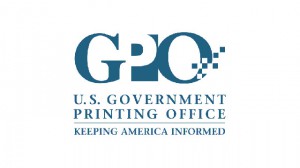 The U.S. Government Printing Office (GPO) has made available the official and authentic digital and print versions of the Report of the Senate Select Committee on Intelligence Committee Study of the Central Intelligence Agency’s Detention and Interrogation Program, together with a forward by Chairman Feinstein and Additional and Minority Views (Senate Report 113-288).
The U.S. Government Printing Office (GPO) has made available the official and authentic digital and print versions of the Report of the Senate Select Committee on Intelligence Committee Study of the Central Intelligence Agency’s Detention and Interrogation Program, together with a forward by Chairman Feinstein and Additional and Minority Views (Senate Report 113-288).
This document comprises the declassified Executive Summary and Findings and Conclusions, including declassified additional and minority views. The full classified report will be maintained by the Committee and has been provided to the Executive Branch for dissemination to all relevant agencies.
The digital version is available on GPO’s Federal Digital System (FDsys).
The print version is available for purchase at GPO’s retail and online bookstore for $29.
Enroll in a health insurance plan TODAY for coverage starting January 1
|
The Data Dude – Seniors and Technology
 This week, the Data Dude takes a look at seniors and technology. The idea here is to first regurgitate some of the data, and then make some observations. According to the Pew Research Internet Project (2014), “six in 10 adults 65 or older go online and just a little less than half have their own high-speed internet connection.” More seniors own either a tablet or an e-reader than a smartphone. When you think about this, it makes perfect sense. Not to make too many generalizations, but the obvious reasons are apparent, such as the smallness of the average smartphone screen and a larger percentage of seniors having difficulty reading the fine print. The same Pew Research study (2014) underscored the fact that the typical senior recognized the value of online information, with 94% agreeing with the statement that: “[T]he internet makes it much easier to find information today than in the past.” Many seniors, however, report that they need assistance to learn the new technologies, but are more than eager to give it a shot. While Pew notes that 77% of seniors need help from someone to walk them through using the technology, this philosophy is perhaps more aptly summed up by 93 year old Virginia Thayer: “I have absolutely no intuition about what to do with these buttons…When I grew up you just didn’t go aground pressing buttons because rather bad things happened…” Yes, Virginia, bad things might happen (we won’t sugar coat it) but most likely nothing will happen. Your grandson will promise to be patient when describing the functionality of “that thingy” in the corner of your screen when showing you how to work your device. On second thought, the good news is that there may be library programs that can help so you don’t have to bother your grandson at all, or perhaps bother him only minimally. Trust me, in most cases you will have a more positive experience with library staff, and your relationship with your grandson (or son or daughter or granddaughter) will not suffer.
This week, the Data Dude takes a look at seniors and technology. The idea here is to first regurgitate some of the data, and then make some observations. According to the Pew Research Internet Project (2014), “six in 10 adults 65 or older go online and just a little less than half have their own high-speed internet connection.” More seniors own either a tablet or an e-reader than a smartphone. When you think about this, it makes perfect sense. Not to make too many generalizations, but the obvious reasons are apparent, such as the smallness of the average smartphone screen and a larger percentage of seniors having difficulty reading the fine print. The same Pew Research study (2014) underscored the fact that the typical senior recognized the value of online information, with 94% agreeing with the statement that: “[T]he internet makes it much easier to find information today than in the past.” Many seniors, however, report that they need assistance to learn the new technologies, but are more than eager to give it a shot. While Pew notes that 77% of seniors need help from someone to walk them through using the technology, this philosophy is perhaps more aptly summed up by 93 year old Virginia Thayer: “I have absolutely no intuition about what to do with these buttons…When I grew up you just didn’t go aground pressing buttons because rather bad things happened…” Yes, Virginia, bad things might happen (we won’t sugar coat it) but most likely nothing will happen. Your grandson will promise to be patient when describing the functionality of “that thingy” in the corner of your screen when showing you how to work your device. On second thought, the good news is that there may be library programs that can help so you don’t have to bother your grandson at all, or perhaps bother him only minimally. Trust me, in most cases you will have a more positive experience with library staff, and your relationship with your grandson (or son or daughter or granddaughter) will not suffer.
About three fourths of the way through this video published by the Nebraska Community Foundation, there is mention of a program offered in Nebraska City that connects teens with seniors to provide assistance to the seniors with using iPads borrowed from the local library. That’s just the kind of help that the seniors (and perhaps even more importantly, the teens) need. As Steve Cone, vice president of membership and integrated value — (er, wait, integrated value? Really? How’s that for a word salad of ambiguity? He’d better change his title, and fast — or he might get RIF’d) at AARP told eWEEK (November 23, 2014): “The No. 1 thing I hear is that every single 40- or 50-year-old person I talk with says ‘Look, I don’t want to continue to be my mom’s or dad’s technology advisor because it takes too much time and it’s frustrating.’” So what did AARP do? They created a tablet specifically for seniors called the RealPad. The screen icons are larger, there are instructional video tutorials that cover aspects of operating the device, and 24/7 telephone customer support. The concept is good, but something tells me that any ol’ tablet could be configured this way, and perhaps provide a better value (either with the price or the specs). So shop around, seniors. Cone reports that the customer service reps can get into the device remotely (Amazon offers the same support with a mayday button on certain Kindle Fire’s), and either take control of the device or just circle/highlight certain buttons. The RealPad tech support persons are trained to “handle calls with patience and sensitivity”. That’s nice to know. Our seniors deserve patience and sensitivity, just as much as they deserve to learn new technologies. I noticed Steve changed his job title (December 3, 2014). He is now known as AARP’s executive vice president of membership. Shaka, Steve.
The Data Dude on Mapping
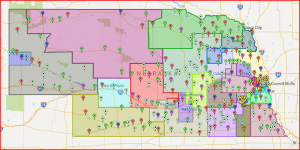 For this week, let’s talk about mapping (there is now a mapping section on the data services portion of the NLC website). But first, a promise that this will be the last reminder for the Digital Inclusion Survey (except for maybe one final e-mail to you next week if you have not yet completed it). The deadline has been extended until December 12, 2014 and there are still Three Kindle Fire HD’s up for grabs if you complete the survey. Enter your contact information at the conclusion of the survey to be eligible for the drawing. Also, don’t forget to complete the speed test by going to www.speedtest.net from a public access terminal or laptop using the library Wi-Fi. Record the download speed, upload speed, and PING. Either enter the numbers into your survey, or e-mail them to me and I will enter the figures for you.
For this week, let’s talk about mapping (there is now a mapping section on the data services portion of the NLC website). But first, a promise that this will be the last reminder for the Digital Inclusion Survey (except for maybe one final e-mail to you next week if you have not yet completed it). The deadline has been extended until December 12, 2014 and there are still Three Kindle Fire HD’s up for grabs if you complete the survey. Enter your contact information at the conclusion of the survey to be eligible for the drawing. Also, don’t forget to complete the speed test by going to www.speedtest.net from a public access terminal or laptop using the library Wi-Fi. Record the download speed, upload speed, and PING. Either enter the numbers into your survey, or e-mail them to me and I will enter the figures for you.
OK, on to the maps. Here at the Commission, a variety of mapping tools are used, including ZeeMaps, Google Fusion Tables, and Google Earth. Thanks to the help of Allana Novotny, things are looking up for understanding the complexities of these mapping tools. A word about collaboration: I mentioned Allana, and I think it’s safe to say had we not collaborated on these things, these maps either would not have gotten done or would not have had the same level of functionality. This has created a boost in my creative confidence (and even analytical thought), and I’m grateful for that (thanks, Allana). On a similar note, if you look at the legislative map mentioned in the next paragraph and have suggestions, please let me know. While the Dude thinks his collaboration with Allana has been a good thing and produced some far out maps, there are other suggestions you might bring to the table, and that is always encouraged. Likewise, if you have ideas for an entirely different map illustration, please let the Dude know and he can possibly put something together for you. The Dude promises to at least try.
Anyway, the legislative map deserves a bit of explanation. The interactive map illustrates the legislative boundaries in the state and has markers for each public library. You can certainly zoom in to your district (or any other district for that matter) for a more detailed look. If you click on one of the districts (but not a marker), a pop-up should appear that tells you the district number, the senator, and a link to the senator’s website. This information is updated with the newly elected senators. Keep in mind that the corresponding webpages might not yet be updated with the new senator names and photos and other stuff, because that is done by the Legislature, not the Library Commission. The zoomable map is especially helpful in the Lincoln or Omaha areas. The Dude added the branch locations for Lincoln and Omaha libraries. If you click on the individual markers for each library, you get a pop-up that provides you with some basic information about the library, legislative district, senator, and a link to more information from the library profile on the NLC website. The markers are colored by service population, and you can filter those by checking or unchecking boxes on the legend at the bottom. The Dude hopes the map might be helpful to you.
Now, for a hint of what the Dude might currently be pondering for data illustrations: The motion chart. The Dude mentions this because of an interest generated after watching the interesting TED Talk by Hans Rosling. If you have a chance to, check it out (if for no other reason, the entertainment value of Hans going nuts over his data illustration) and feel free to give the Dude some ideas on how such a motion chart could be generated for Nebraska Libraries, or what data might be good to illustrate. This is in the brainstorming stage at this point, so feel free to provide some collaboration, or perhaps just an idea. The Dude welcomes a distraction from all these surveys. Shaka.
Workforce Innovation and Opportunity Act (WIOA)
 President Barack Obama signed the Workforce Innovation and Opportunity Act (WIOA) into law on July 22, 2014. WIOA is designed to help job seekers access employment, education, training, and support services to succeed in the labor market and to match employers with the skilled workers they need to compete in the global economy. More information and resources are available from the U.S. Department of Labor.
President Barack Obama signed the Workforce Innovation and Opportunity Act (WIOA) into law on July 22, 2014. WIOA is designed to help job seekers access employment, education, training, and support services to succeed in the labor market and to match employers with the skilled workers they need to compete in the global economy. More information and resources are available from the U.S. Department of Labor.
In addition, the American Library Association (ALA) has released a list of resources and tools that provide more information about the Workforce Innovation and Opportunity Act (WIOA) as it relates to libraries. The Workforce Innovation and Opportunity Act allows public libraries to be considered additional One-Stop partners, prohibits federal supervision or control over selection of library resources and authorizes adult education and literacy activities provided by public libraries as an allowable statewide employment and training activity.
- Have additional questions about WIOA? Access additional WIOA resources (pdf)
- Watch the archived WIOA webinar now (Note: You must download the WebEx media player to view the video)
- Download PowerPoint slides from the webinar (ppt)
Reprinted from District Dispatch: The Official ALA Washington Office Blog, November 25, 2014.
Free webinar: The latest on Ebola
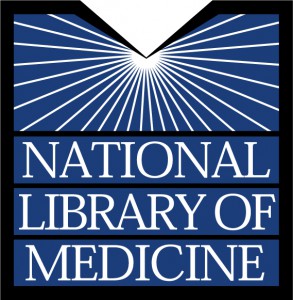 As the Ebola outbreak continues, the public must sort through all of the information being disseminated via the news media and social media. In this rapidly evolving environment, librarians are providing valuable services to their communities as they assist their users in finding credible information sources on Ebola, as well as other infectious diseases.
As the Ebola outbreak continues, the public must sort through all of the information being disseminated via the news media and social media. In this rapidly evolving environment, librarians are providing valuable services to their communities as they assist their users in finding credible information sources on Ebola, as well as other infectious diseases.
On Tuesday, December 12, 2014, library leaders from the U.S. National Library of Medicine will host the free webinar “Ebola and Other Infectious Diseases: The Latest Information from the National Library of Medicine.” As a follow-up to the webinar they presented in October, librarians from the U.S. National Library of Medicine will be discussing how to provide effective services in this environment, as well as providing an update on information sources that can be of assistance to librarians.
Speakers
- Siobhan Champ-Blackwell is a librarian with the U.S. National Library of Medicine Disaster Information Management Research Center. Champ-Blackwell selects material to be added to the NLM disaster medicine grey literature data base and is responsible for the Center’s social media efforts. Champ-Blackwell has over 10 years of experience in providing training on NLM products and resources.
- Elizabeth Norton is a librarian with the U.S. National Library of Medicine Disaster Information Management Research Center where she has been working to improve online access to disaster health information for the disaster medicine and public health workforce. Norton has presented on this topic at national and international association meetings and has provided training on disaster health information resources to first responders, educators, and librarians working with the disaster response and public health preparedness communities.
Date: December 12, 2014
Time: 2:00 PM–3:00 PM Eastern
Register for the free event
If you cannot attend this live session, a recorded archive will be available to view at your convenience. To view past webinars also done in collaboration with iPAC, please visit Lib2Gov.org.
Reprinted from District Dispatch: The Official ALA Washington Office Blog, November 21, 2014.
